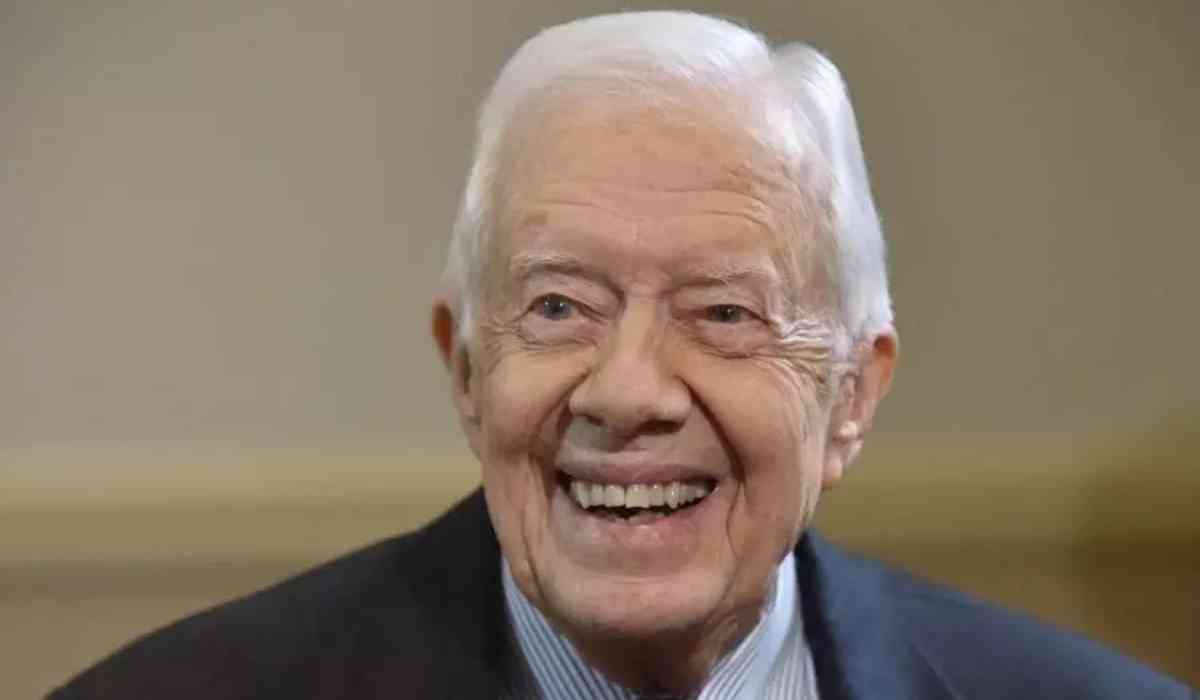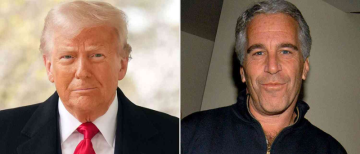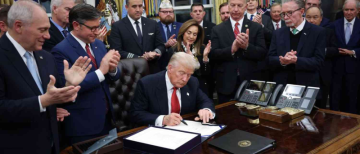Former U.S. President Jimmy Carter, the 39th president and a Nobel Peace Prize laureate, passed away on December 29, 2024, at the age of 100. His death marks the end of a remarkable life dedicated to public service, human rights, and humanitarian efforts. Carter’s longevity set a record among U.S. presidents, and his passing prompts reflection on the ages and lifespans of American leaders.

Jimmy Carter: A Legacy of Service
Born on October 1, 1924, in Plains, Georgia, Jimmy Carter served as the 39th President of the United States from 1977 to 1981. His presidency was marked by significant achievements, including the Camp David Accords, which led to a peace treaty between Egypt and Israel. After his presidency, Carter continued to impact global affairs through the Carter Center, focusing on human rights, democracy, and disease eradication. In 2002, he was awarded the Nobel Peace Prize for his efforts in finding peaceful solutions to international conflicts.
The Ten Longest-Living U.S. Presidents
Jimmy Carter’s passing at 100 years and 89 days makes him the longest-living president in U.S. history. Here is a list of the ten longest-living U.S. presidents:
1. Jimmy Carter: Lived to 100 years and 89 days.
2. George H. W. Bush: Lived to 94 years and 171 days.
3. Gerald Ford: Lived to 93 years and 165 days.
4. Ronald Reagan: Lived to 93 years and 120 days.
5. John Adams: Lived to 90 years and 247 days.
6. Herbert Hoover: Lived to 90 years and 71 days.
7. Harry S. Truman: Lived to 88 years and 232 days.
8. James Madison: Lived to 85 years and 104 days.
9. Thomas Jefferson: Lived to 83 years and 82 days.
10. Richard Nixon: Lived to 81 years and 103 days.
These presidents not only lived long lives but also contributed significantly to the nation’s history during and after their presidencies.
Current Living U.S. Presidents
As of December 30, 2024, the living former U.S. presidents are:
• Bill Clinton: Born on August 19, 1946, Clinton is 78 years old.
• George W. Bush: Born on July 6, 1946, Bush is also 78 years old.
• Barack Obama: Born on August 4, 1961, Obama is 63 years old.
• Donald Trump: Born on June 14, 1946, Trump is 78 years old.
• Joe Biden: Born on November 20, 1942, Biden is 82 years old and currently serving as the 46th President of the United States.
These individuals represent the current living presidents of the United States, each with a unique legacy and ongoing influence in American politics.
Tributes and Reflections
Following Carter’s passing, tributes have poured in from across the political spectrum. President Joe Biden stated, “America and the world lost an extraordinary leader, statesman, and humanitarian.” Former President Barack Obama remarked, “Jimmy Carter was a man of character, courage, and compassion.” Former President George W. Bush noted, “He showed us all what it means to be a true servant leader.” These sentiments reflect the profound impact Carter had on the nation and the world.
The Significance of Presidential Longevity
The longevity of U.S. presidents offers insights into advancements in healthcare and the changing nature of post-presidential life. Early presidents often did not live as long due to the limited medical knowledge of their times. In contrast, modern presidents benefit from advanced healthcare, allowing them to live longer and remain active in public life well into their later years.
For instance, after leaving office, Jimmy Carter dedicated himself to humanitarian efforts, including working with Habitat for Humanity and monitoring elections worldwide through the Carter Center. Similarly, George H. W. Bush engaged in various public service activities, including disaster relief efforts alongside former President Bill Clinton. These extended post-presidential years have enabled former leaders to continue contributing to society in meaningful ways.
Historical Perspectives
Looking back, John Adams and Thomas Jefferson, both Founding Fathers, lived to 90 and 83 years, respectively. Notably, both died on July 4, 1826, the 50th anniversary of the Declaration of Independence. Their longevity allowed them to witness the early development of the nation they helped establish.
In contrast, some presidents had shorter lifespans. John F. Kennedy was the youngest president to die, assassinated at 46. James A. Garfield and William McKinley also had their lives and presidencies cut short by assassination. These tragedies had profound impacts on the nation and highlighted the vulnerabilities of its leaders.
Advancements in Healthcare and Security
The increasing lifespans of modern presidents can be attributed to several factors:
1. Advancements in Medical Science: Modern healthcare provides early detection, treatment of illnesses, and a greater understanding of nutrition and fitness, contributing to extended lifespans. For example, Jimmy Carter survived metastatic melanoma in his 90s, a testament to the progress in cancer treatment.
2. Enhanced Security Measures: The safety of U.S. presidents has improved significantly over the decades. Modern security protocols, including personal bodyguards and high-tech surveillance, ensure their well-being even after they leave office.
3. Reduced Stress Post-Presidency: While the presidency is one of the most stressful jobs in the world, life after the Oval Office often offers former presidents opportunities to focus on less stressful yet meaningful work, such as philanthropic efforts, writing memoirs, and engaging in public speaking.
The Role of Living Presidents
Living presidents serve as an embodiment of historical continuity and often remain influential figures in public discourse. They are regularly consulted on critical national and global issues. For example:
• Bill Clinton and George W. Bush collaborated on numerous humanitarian efforts, including fundraising for disaster relief in Haiti and post-tsunami Asia.
• Barack Obama continues to influence conversations on climate change and social justice through the Obama Foundation.
• Donald Trump, while controversial, has maintained a significant presence in American politics and public discourse.
• Joe Biden, though currently in office, will likely join this group in the coming years, contributing as a seasoned statesman.
Post-Presidency Contributions
Former presidents have used their post-presidency years to make lasting contributions to society. Here are some notable examples:
• Jimmy Carter: His humanitarian work, particularly through the Carter Center, has positively impacted millions of lives. From disease eradication campaigns to advocating for fair elections, his legacy goes beyond his presidency.
• George H. W. Bush: Known for his “Points of Light” initiative, Bush Sr. emphasized volunteerism and community service during and after his presidency.
• Bill Clinton: Through the Clinton Foundation, he has tackled global challenges such as HIV/AIDS, economic inequality, and climate change.
• Barack Obama: The Obama Foundation has focused on leadership development, particularly among young people, and on building the Obama Presidential Center in Chicago.
Historical Impact of Longevity
The ability of former presidents to live long lives and remain active has reshaped the perception of the presidency. These leaders, through their continued work and influence, demonstrate that their contributions do not end with their terms in office. They act as elder statesmen, providing advice, perspective, and leadership on issues that transcend their presidencies.
The Legacy of Jimmy Carter
Jimmy Carter’s passing underscores a life fully lived in service of others. From his modest beginnings in Plains, Georgia, to his leadership on the global stage, Carter’s journey inspires countless individuals. His record-breaking longevity reflects not just physical resilience but also the enduring impact of a life dedicated to faith, humanity, and peace.
The outpouring of tributes from both national and international leaders illustrates the widespread admiration for Carter’s unwavering commitment to justice and compassion. As historian Douglas Brinkley put it: “Jimmy Carter was not just a president, but a moral compass for a country navigating challenging times.”
Conclusion
Jimmy Carter’s death at 100 marks the end of an era, but his legacy will continue to inspire future generations. The longevity of modern U.S. presidents reflects advancements in healthcare, shifts in the nature of the presidency, and the enduring influence these leaders have on society.
As the list of living former U.S. presidents grows, it serves as a reminder of the enduring nature of leadership and the lasting contributions these individuals can make. Whether through philanthropy, public speaking, or advocacy, these leaders show that their work is far from over after their time in office.
With inputs from agencies
Image Source: Multiple agencies
© Copyright 2024. All Rights Reserved Powered by Vygr Media.


























